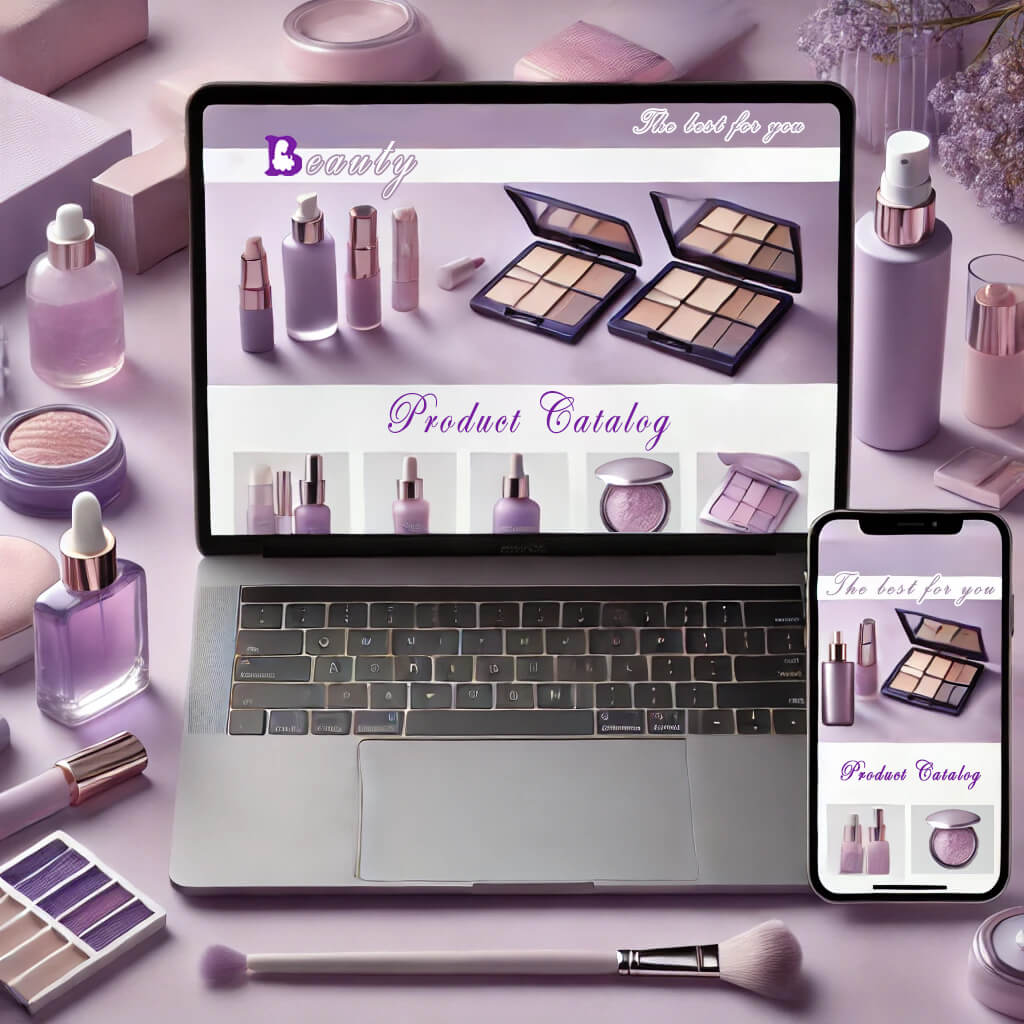Product Catalog on a Beauty Business Website: Main Reasons and Key Points of Creation

Beauty salons often sell cosmetic products. Selling products in a salon benefits both the business and its clients. It generates additional income, increases customer loyalty, and helps maintain the quality of services.
Main Reasons for Creating a Product Catalog on a Beauty Business Website and Selling Cosmetic Products:
1. Additional Source of Income
Selling cosmetics is a way to boost profits. While providing services, a salon can also sell clients products that prolong the effects of treatments. This is convenient and beneficial for both the salon and clients, who won’t need to search for care products elsewhere.
2. Client Trust
Clients trust the recommendations of professionals. After a treatment, a client may want to maintain the results at home, and a master’s suggestion of a specific product is perceived as expert advice.
3. Improved Service Quality
When clients use products recommended by the salon, the results of procedures last longer. This increases client satisfaction and the likelihood of their return.
4. Unique or Professional Products
Salons often offer cosmetics unavailable in regular stores. This creates a sense of exclusivity and attracts clients who want to use professional-grade products.
5. Increased Client Loyalty
If a client likes the products, they may return to the salon not only for services but also for purchases. This builds a loyal customer base.
6. Comprehensive Care
Salons can offer products as part of a complete care package. For example: after hair coloring—shampoos and masks to protect the color; after a facial—skincare to extend the effects; after a manicure—oils and creams for cuticle care.
7. Promotions and Loyalty Programs
Salons can offer discounts on products with a course of treatments or bonuses for repeat purchases.
It’s essential for a beauty salon to have a product catalog on its website so clients can access additional information, explore the range, and check prices. The catalog should be user-friendly, informative, and visually appealing.
Key Points to Consider When Creating a Product Catalog:
1. Is a Catalog Necessary?
Yes, if the website aims to sell or at least showcase products. Even without direct sales, a catalog helps potential clients explore the assortment and product features.
2. What to Include in the Catalog?
Essential elements:
- Product Photos — High-quality images (preferably from multiple angles).
- Name — Clear, understandable, and appealing.
- Short Description — Key product properties (e.g., “Mattifying foundation for oily skin”).
- Full Description — Ingredients, usage instructions, skin/hair type recommendations, and other important details.
- Price — Include prices if sales occur on the site. If not, use a range or “Price upon request.”
- Purchase Option — A “Buy,” “Order,” or “Where to Buy” button with links to partners.
- Reviews and Ratings — Boost buyer trust.
- Availability — In stock or on order, to clarify product accessibility.
3. Delivery and Payment
If the site supports online sales, include:
- Delivery terms (countries, regions, timelines).
- Pickup options (if available).
- Payment methods (cards, PayPal, cash on delivery, etc.).
- Return and exchange policy.
4. Product Description
Descriptions should be concise yet informative.
Example structure:
- What is it? — The product’s main function.
- Who is it for? — Suitable for all skin/hair types or specific ones.
- How to use? — Brief instructions.
- Ingredients — Key active components.
- Benefits — What sets this product apart from others.
Example:
Mattifying Foundation with SPF 30
🌿 What is it? A lightweight foundation that evens skin tone and controls shine.
💖 Who is it for? Ideal for combination and oily skin.
✨ How to use? Apply to clean skin after moisturizer.
🌟 Ingredients: Green tea extract, niacinamide, hyaluronic acid.
🎯 Benefits: Non-comedogenic, sun protection, lasts up to 12 hours.
5. Catalog Structure
The catalog should be easy to navigate.
Possible categories:
- Product Type: Face care, body care, hair care, decorative cosmetics.
- Skin/Hair Type: For dry, oily, combination skin, colored hair, etc.
- Brands (if multiple are offered).
- New Arrivals, Bestsellers, Discounts.
Additional filters: by price, ingredients, purpose.
A catalog on a beauty website is necessary if there’s something to showcase (even without direct sales). Include prices if purchases are possible; otherwise, use “Price upon request.” A user-friendly structure, clear descriptions, high-quality photos, and a reviews section are crucial.